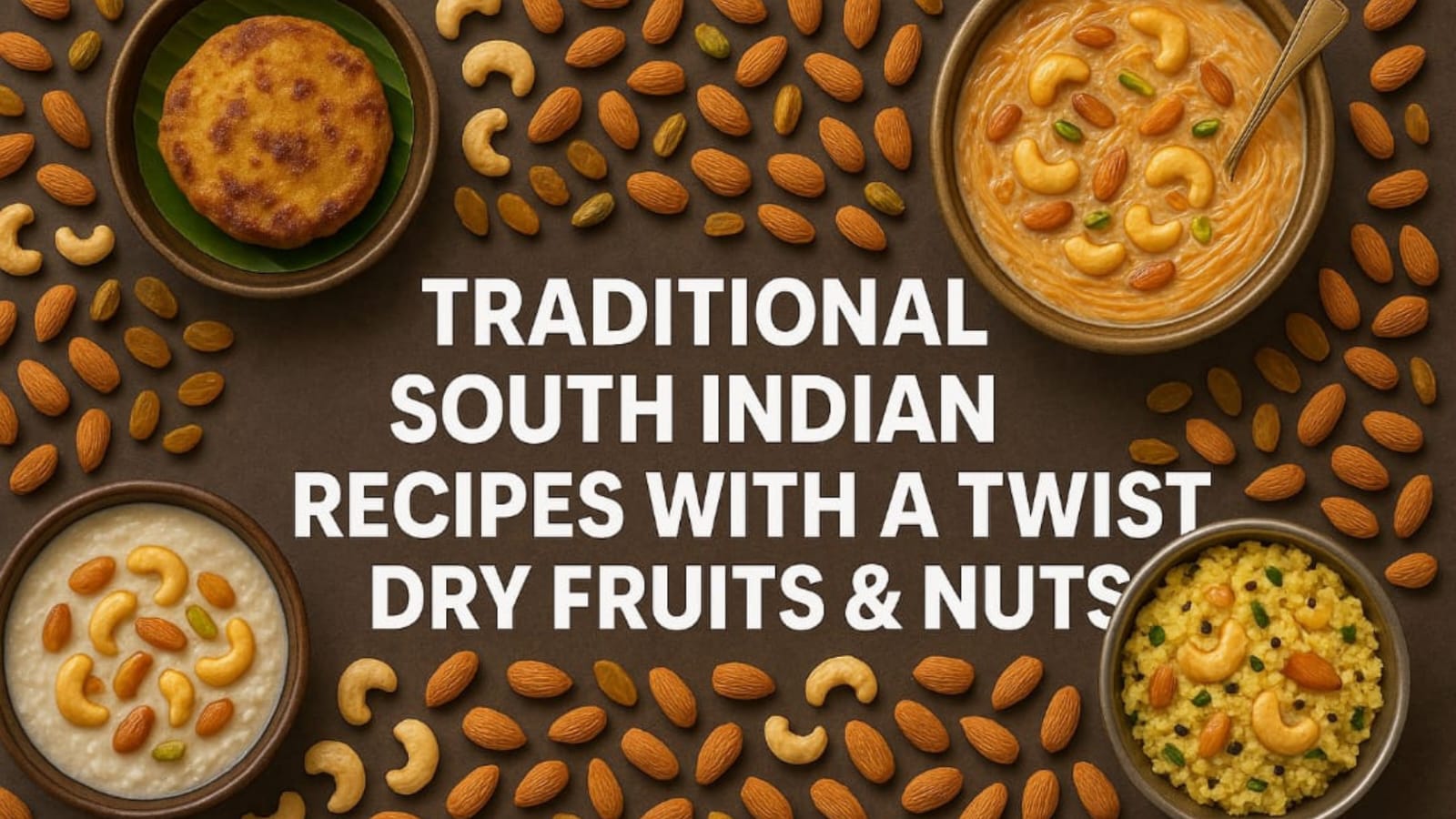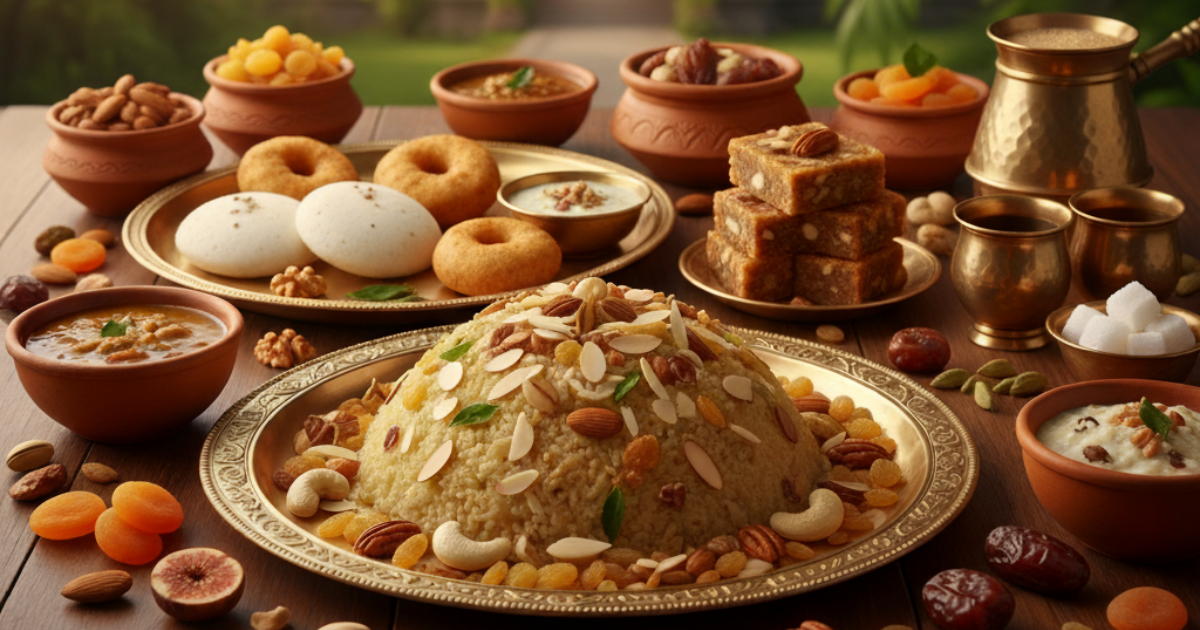
Introduction
South Indian cuisine is known for its vibrant flavors, aromatic spices, and comforting dishes that celebrate tradition and culture. From crispy dosas to wholesome sambars, every meal reflects centuries of culinary heritage. But what happens when we bring a modern, nutritious twist to these traditional recipes? That’s where dry fruits and nuts step in.
At Monuts, Chennai, we believe that healthy eating should be both delicious and exciting. By incorporating dry fruits and nuts into South Indian recipes, we add not only crunch and richness but also essential nutrients like proteins, vitamins, and antioxidants. This fusion creates dishes that are rooted in tradition yet adapted to the health-conscious lifestyle of today.
In this blog, let’s explore how classic South Indian recipes can be elevated with dry fruits and nuts, transforming everyday meals into gourmet experiences.
The Importance of Dry Fruits and Nuts in Modern Diets
Before diving into recipes, it’s worth highlighting why dry fruits and nuts are so valuable. Nutrient Powerhouses: Almonds, cashews, pistachios, and walnuts are packed with healthy fats, fiber, and minerals.
- Energy Boosters: Perfect for busy lifestyles, they keep you full for longer.
- Heart-Friendly: Regular consumption supports good cholesterol levels.
- Cultural Connection: In India, nuts and dry fruits have been used in festive sweets and temple prasadams for centuries.
When combined with South Indian food, they bring balance—blending health with heritage.
South Indian Recipes with a Twist of Dry Fruits & Nuts
-
Kesari with Almonds and Pistachios
Kesari (or Rava Kesari) is a festival-favorite sweet dish made with semolina, ghee, and sugar.
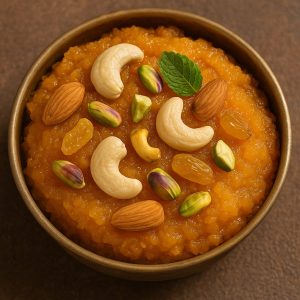
Traditional Base: Semolina cooked in ghee with sugar and saffron.
Twist: Add roasted almonds and pistachios for crunch, and finish with a drizzle of cashew paste for creaminess.
Result: A rich, melt-in-mouth kesari that feels festive and nourishing.
-
Dry Fruit Coconut Ladoo
Ladoos are integral to South Indian homes, especially during Diwali or family functions.
Traditional Base: Grated coconut and jaggery.
Twist: Blend in chopped dates, figs, and cashews to make it naturally sweet and protein-rich.
Result: A guilt-free sweet that doubles as an energy snack.
-
Cashew-Coconut Payasam
Payasam is the heart of every South Indian feast (Sadya).
Traditional Base: Milk, rice, and jaggery or sugar.
Twist: Use a creamy cashew paste as the base, topped with golden fried raisins and almonds.
Result: A decadent payasam that tastes luxurious yet comforting.
-
Walnut Chutney
No South Indian meal is complete without chutney.
Traditional Base: Coconut chutney with green chilies and curry leaves.
Twist: Replace part of the coconut with walnuts, giving the chutney a nutty depth and omega-3 boost.
Result: A healthier, richer version of the beloved chutney.\
-
Almond Masala Dosa
The dosa is iconic, but why not give it a twist?
Traditional Base: Fermented rice-lentil batter with potato masala.
Twist: Add a smooth almond-cashew paste to the potato filling, making it creamier and protein-packed.
Result: A dosa that’s both indulgent and wholesome.
-
Pista-Infused Sambar
Sambar is a comfort food for South Indians, made with lentils, tamarind, and spices.
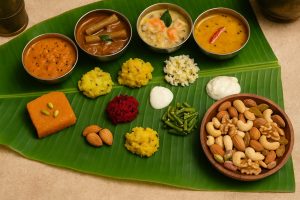
Traditional Base: Toor dal (pigeon peas) with tamarind and sambar powder.
Twist: Add a fine paste of pistachios to thicken and enrich the sambar.
Result: A velvety, nutty sambar that pairs beautifully with rice or idlis.
-
Dry Fruit Idli Upma
Idlis are soft steamed rice cakes, often repurposed into upma.
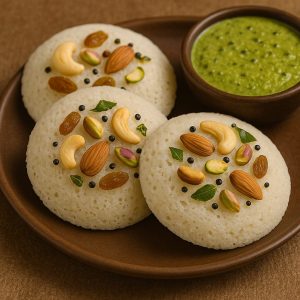
Traditional Base: Crumbled idlis sautéed with onions, curry leaves, and spices.
Twist: Toss in roasted cashews, raisins, and almonds for extra flavor and nutrition.
Result: A quick breakfast that is both traditional and contemporary.
-
Jackfruit and Cashew Avial
Avial is a mixed-vegetable curry in coconut gravy.
Traditional Base: Coconut, green chilies, and yogurt.
Twist: Add tender cashews and dry fruit puree to enrich the coconut base.
Result: A unique avial that balances tradition with gourmet finesse.
Why Add Dry Fruits and Nuts to Traditional Recipes?
- Enhanced Nutrition: Adds proteins, fiber, and healthy fats.
- Texture & Flavor: Crunchy cashews or chewy raisins transform the mouthfeel.
- Longer Shelf Life: Recipes enriched with dry fruits and nuts often stay fresh longer.
- Appeal to All Ages: Kids love the sweetness of raisins, while adults appreciate the crunch of almonds.
Tips for Cooking with Dry Fruits and Nuts
- Roast before use: Enhances flavor and aroma.
- Soak overnight: Almonds and raisins soften, blending well in gravies.
- Use sparingly: Nuts are calorie-rich; balance with other ingredients.
- Pairing matters: Cashews work with creamy dishes, walnuts with chutneys, pistachios with sweets.
Cultural Significance
Interestingly, many South Indian temples already use dry fruits and nuts in prasadam. Famous examples include:
- Tirupati Laddu – loaded with cashews and raisins.
- Chakkarai Pongal – rice pudding with ghee, cashews, and raisins.
So, this “fusion” isn’t entirely new—it’s an evolution of tradition.
Modern Lifestyle Adaptation
In today’s fast-paced world, people seek meals that are:
- Nutritious (boost immunity)
- Quick to prepare
- Visually appealing for Instagram
By adding dry fruits and nuts to recipes, we create food that meets all three demands.
Monuts – Your Partner in Healthy Fusion
At Monuts, Chennai, we curate premium-quality dry fruits and nuts to help families make these recipes a part of daily life. Whether you’re preparing a grand Onam Sadya, a temple offering, or a quick evening snack, our handpicked nuts and dry fruits ensure taste, health, and freshness.
- Almonds → for dosas, ladoos, and desserts.
- Cashews → for payasams and gravies.
- Pistachios → for sambar and sweets.
- Raisins & Dates → for ladoos and natural sweetening.
- Walnuts → for chutneys and modern dishes.
When tradition meets nutrition, every meal becomes a celebration.
Conclusion
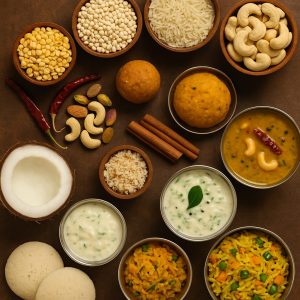
South Indian food is a living tradition—passed down generations, rooted in temple culture, and loved across the world. By introducing dry fruits and nuts, we’re not replacing tradition but enriching it. These ingredients elevate familiar dishes, making them healthier, tastier, and future-ready.
Next time you prepare a dosa, payasam, or chutney, try adding almonds, cashews, or pistachios. You’ll taste the magic instantly. At Monuts, Chennai, we are proud to help you embrace this journey—where every bite is a balance of culture and wellness.
So, let’s celebrate South Indian tradition with a modern twist—powered by the goodness of dry fruits and nuts!
Frequently Asked Questions (FAQs)
- What makes South Indian cuisine unique?
Its use of rice, lentils, coconut, and spices creates a tangy, spicy, and earthy flavor balance.
- Why add dry fruits and nuts to South Indian recipes?
They add crunch, natural sweetness, and boost nutrition with proteins, vitamins, and healthy fats.
- Are dry fruits and nuts traditionally used in South Indian cooking?
Yes, classics like Tirupati Laddu and Pongal use cashews and raisins.
- How do dry fruits and nuts improve nutrition in these recipes?
They add protein, fiber, antioxidants, and good fats for better energy and immunity.
- Which nuts pair best with South Indian dishes?
Cashews for gravies, almonds for sweets, pistachios for sambar, walnuts for chutneys, raisins/dates for sweetness.
- Can dry fruits replace sugar in traditional sweets?
Yes, dates, figs, and raisins naturally sweeten ladoos, payasam, and pongal.
- Are these recipes suitable for kids and older adults?
Yes, kids enjoy the taste and elders gain nutrition and energy.
- How do dry fruits and nuts enhance texture in recipes?
They add creaminess, crunch, chewiness, and nutty depth.
- Are these fusion dishes healthier than the originals?
Yes, they reduce refined sugar and add protein, fiber, and healthy fats.
- Do these fusion dishes still retain authentic South Indian flavors?
Yes, the traditional base stays intact, only enriched with dry fruits.
- How can I make Kesari healthier using dry fruits?
Use almonds, pistachios, and cashew paste instead of extra ghee and sugar.
- What dry fruits work best for coconut ladoos?
Dates, figs, and cashews with coconut and jaggery add sweetness and protein.
- Can I prepare payasam without refined sugar using dates or figs?
Yes, they sweeten the base naturally and healthily.
- How do walnuts change the flavor of traditional chutney?
They give it an earthy, nutty flavor with added omega-3.
- What’s the benefit of adding almond paste to dosa masala?
It makes the filling creamier, protein-rich, and satisfying.
- Will pistachio paste alter the taste of sambar significantly?
No, it just adds subtle nuttiness without losing the original flavor.
- Can dry fruits be added to idli upma daily for breakfast?
Yes, cashews, almonds, and raisins make it crunchy and wholesome.
- How do cashews complement avial?
They add creaminess to the coconut gravy, balancing flavors.
- What’s the easiest recipe to start with for beginners?
Dry fruit coconut ladoo—quick, simple, and tasty.
- Where can I buy high-quality dry fruits and nuts for these dishes?
At Monuts, Chennai, known for premium freshness and quality.

